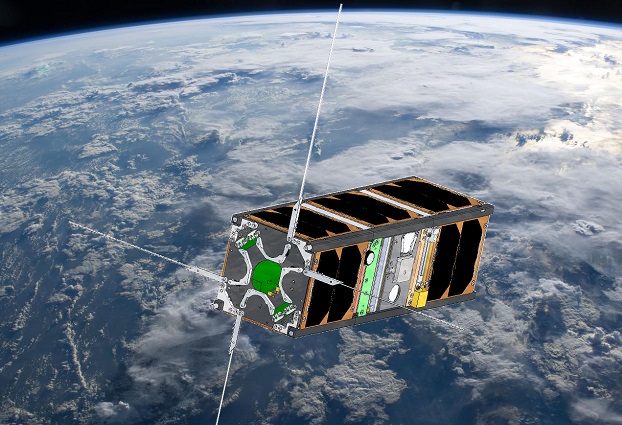
Artist’s impression of the CUAVA-1 CubeSat in orbit. Courtesy University of Sydney.
An Australian-designed and -built experimental spacecraft, CUAVA-1, will be launched aboard a Space-X Falcon 9 rocket from the Kennedy Space Center on 28 August.
The mission is the lead project of the Australian Research Council Training Centre for CubeSats, Uncrewed Aerial Vehicles and their Applications (CUAVA).
CUAVA-1’s four experimental payloads will give scientists and research students insights from near-Earth orbit during its 12-month mission.
The spacecraft will first be carried to the International Space Station before being released into an independent orbit later this year.
Another Australian CubeSat, Binar-1, will be carried into space on the same flight.
The CUAVA-1 mission’s aims are to:
- Investigate Earth’s plasma environment and space weather using on board radiation detectors
- Observe Earth using novel imaging technology
- Test equipment designed for use in a future satellite that will search for signs of life on planets around Alpha Centauri, our nearest star system
- Link with the international amateur radio union for education and outreach.
“This mission shows that Australian universities are at the forefront of our emerging national space industry,” said Director of CUAVA, Professor Iver Cairns from the School of Physics at the University of Sydney.
“Our CUAVA Training Centre is leading in the development of near-Earth space technology and is a critical link in training the next generation of space engineers and scientists.”
CUAVA-1 will be the first spaceflight managed by Saber Astronautics through the Responsive Space Operations Centre (RSOC) in Adelaide.
“Saber is delighted to fly the CUAVA-1 satellite out of the newly minted Responsive Space Operations Centre, which went live at Lot Fourteen in Adelaide last March,” said the CEO of Saber Astronautics, Dr Jason Held.
Based at the University of Sydney, CUAVA is a joint project involving the University of NSW, Macquarie University, multiple Australian commercial and government partners and the Rochester Institute of Technology in the USA.
CUAVA’s government partners are the Australian Bureau of Meteorology and the Department of Defence. Its commercial partners include Air@Wave Communications, ArborCarbon, HyVista and Saber Astronautics.
Stay up to date by getting stories like this delivered to your inbox.
Sign up to receive our free weekly Spatial Source newsletter.












